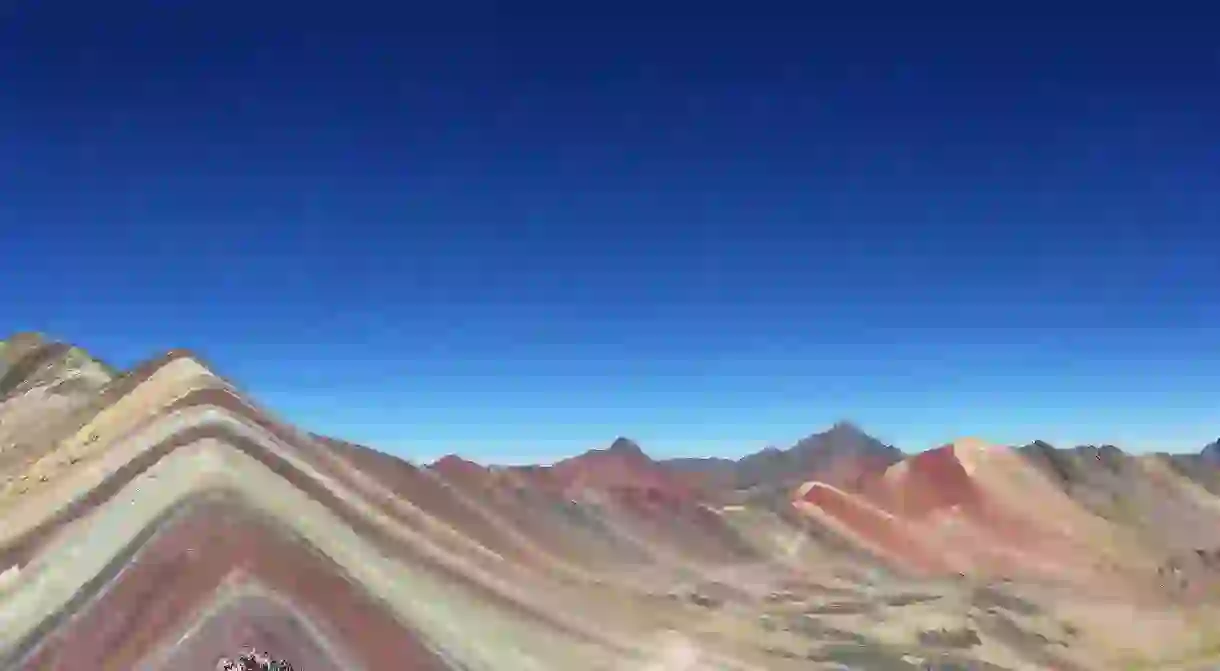10 Things You Should Know Before Hiking Rainbow Mountain

Vinicunca Mountain, also known as Montaña de Siete Colores or Rainbow Mountain, can be visited from Cusco, one of Peru’s most attractive tourist hubs, from where you can also visit Machu Picchu. The top of Rainbow Mountain sits at 5,200m, which is higher than Mont Blanc at 4,810 and nearly as high as Everest Base Camp, at 5,389.
Acclimatize
If you are planning to hike within the Andes Mountain Range, the chances are you will be at high altitude, so acclimatising is extremely important before you exert yourself at even higher altitudes. For those who have come from sea level, you will most definitely want to spend a couple of days getting used to it and if possible, go up gradually. Cusco stands at 3,399m so even for those coming from Lima (1550m), that can be quite an adjustment.
Sleep
If and when you are advised to have an early night before, do so! In addition, having a couple of pints really won’t leave you in good stead the next day, that hangover will probably be magnified as the altitude increases, especially as you have to leave Cusco between 2:30 and 3:30 am!
Don’t get conned!
On the internet the prices for the trip (all the trips from Cusco for that matter) are at an inflated price, at around $150-200 USD, when in Cusco they are normally 70 Soles ($21USD), although you may need to barter and ask different companies. Don’t be lured into a higher price thinking it’s with a better company, most of them get thrown in together. In addition, pictures may sometimes be misleading with a transfer van, you only get a transfer to the bottom of the trail.

Drink mate de coca
The Peruvians swear by both chewing coca leaves and having them as a tea, thanks to the old Incan ritual. In addition to this, you can go to the pharmacy and pick up altitude sickness pills, although many of the ones you get over the counter are glorified pain killers with caffeine and they aren’t much use when you already have altitude sickness. Make sure that you drink plenty of fluids as your body needs it, water primarily to hydrate you, but sugary drinks and snacks are also important.
Signs of altitude sickness
You will experience altitude sickness when you can’t get enough oxygen from the air, this will lead you to have symptoms such as a headache, loss of appetite, fatigue, dizziness and lightheadedness, shortness of breath with exertion and finally some people feel nauseous and vomit.
Other strange signs
Do not fret! Some people may not show any signs of altitude sickness, but their body might do something else that could be considered as strange. As you receive less oxygen, your body favours your respiratory system, so it’s common that you may have a bout of diarrhoea, swollen fingers, achey limbs or a worsened cough. Altitude sickness only usually improves when you descend to lower altitude.

You never know when it’ll get you
Altitude sickness works in mysterious ways, some days you’ll get away scot free, some days it might just hit you for six. This is especially the case if you’ve suffered from altitude sickness in the past few days, but felt better, it can always come back to haunt you.
Distance vs time
You may look at the distance and the time allotted and think that you’d be able to conquer it in half the time, unless you’re very well accustomed to altitude and extremely fit, then this probability is extremely slim! You may as well take your time as you don’t want to over exert yourself, and the buses all wait for all their passengers anyway.
Reality vs Instagram
Many photos are rather obviously edited, turning up the saturation to manipulate the photos into looking even more impressive. Don’t let this leave you downhearted, the journey up there is still pretty magnificent, especially when the sun is shining… which leads to our next point!

Choose the summer season
It’s highly advised not to go during wet weather, which is common during the winter season months November to March, as the path can become very unsturdy and eventually turns into a mudslide, which combined with jelly legs might end up a rather mucky excursion. In addition to this, due to its height it’s hard to predict the visibility, which once you’ve grafted for nearly two hours to get there, is pretty important.













